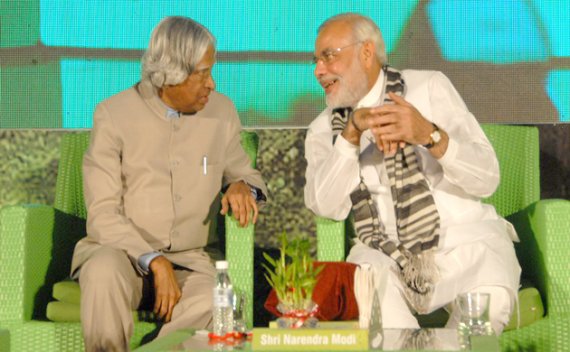Raja Rao Pochiraju
In a world where military superiority is often equated with Western or Chinese hardware, India’s blistering three-day response to cross-border terror has turned that assumption on its head. What was widely expected to be a limited engagement spiralled into a showcase of indigenous technological innovation, precision warfare, and strategic autonomy, with India’s homegrown systems not just holding their ground, but stunning even the world’s major powers.
At the heart of India’s battlefield dominance was a suite of weapons systems and surveillance tools conceptualized, designed, and refined by Indian scientists and engineers, many of them mentored or inspired by the late Dr. A.P.J. Abdul Kalam, the father of India’s missile programme. From interceptors to cruise missiles, space-based precision tracking to electromagnetic intelligence, India’s victory wasn’t just military — it was a triumph of self-reliant innovation.
BrahMos and the Art of the Surgical Strike
Among the standout performers was the BrahMos cruise missile, a joint Indo-Russian effort but one whose technological maturation and deployment have been driven by Indian agencies. With a range of up to 500 km and blistering speeds of Mach 2.8, BrahMos missiles precisely struck terror camps and key Pakistani logistics nodes in Pakistan-occupied territories, with near-zero collateral damage. Real-time satellite feed integration allowed targets to be tracked and verified within seconds.

The element of surprise was complete. Despite Pakistan’s supposedly high-alert nuclear cover — reportedly under the protective umbrella of a U.S.-supplied deterrent grid — India’s strike teams neutralized threats without crossing the nuclear red line. The world watched in disbelief: a country with indigenous missiles was navigating the tightrope of limited war with clinical precision.
Akash and the Shattered Radar Illusion
For decades, China and Pakistan flaunted their radar and air defence superiority, often mocking India’s slower adoption curve. But the war flipped that narrative. India’s Akash surface-to-air missile systems, fully indigenous and developed by the DRDO, provided airtight air defence across its northern and western sectors.
Pakistani fighter jets were deterred, and in some cases downed, by Akash batteries that locked on with radar-homing accuracy. China’s passive radar systems, reportedly deployed in Pakistan for trials, failed to detect Indian missile launches until it was too late. It was a technological reality check for Beijing, long used to bluffing dominance.

Satellites: India’s Silent Assassins in the Sky
If BrahMos and Akash were the sword and shield, India’s space-based surveillance network was the all-seeing eye. In what military analysts are calling a first for any Asian power, India’s constellation of remote sensing satellites provided real-time battlefield awareness with pinpoint accuracy.
From tracking the movement of Pakistani army convoys to capturing high-resolution thermal imaging of terror launchpads, India’s satellites turned the war theatre into a digital map of red-flagged targets. Integration with ground-based AI command systems ensured that strike approvals were granted within minutes, not hours.
India even reportedly jammed key Pakistani military communication nodes using electronic warfare suites, preventing any coordinated retaliation. Notably, the U.S. and Russia — both watching closely — acknowledged that no country outside the P5 nuclear powers had ever leveraged indigenous satellite systems so precisely in such a short, high-stakes operation.
Kalam’s Legacy, India’s Moment
What made the world sit up wasn’t just the firepower — it was where it came from. Unlike Pakistan, which depends heavily on Chinese military imports, India’s critical systems were homegrown. This included not just missiles, but tracking radars, command-and-control software, and even the AI algorithms that sifted through satellite data to rank target priorities.

The legacy of Kalam, who once said, “You have to dream before your dreams can come true,” — came alive in every Akash missile launched, every BrahMos that found its mark, every satellite that guided the hand of command.
The Day India Proved Its Tech Might
In just three days, India redefined what an indigenous military-industrial base can achieve. It demonstrated that real deterrence doesn’t lie in the number of nukes, but in the capacity to fight smart, swift, and silently. It showed that in the age of hypersonics, ISR satellites, and AI-driven war rooms, India no longer plays catch-up — it sets the pace.
Global powers are now recalibrating their assumptions about Indian capabilities. Some are even seeking technology-sharing agreements with DRDO, long ignored. What began as a retaliation against terror ended as a showcase of technological sovereignty.
India didn’t just win a battle. It sent a message: The future of warfare is Indian-made. (The author is a qualified engineer, exposed to Radar systems, computers, and other related technologies. An IITian from Madras and worked with BEL for close to a decade.






